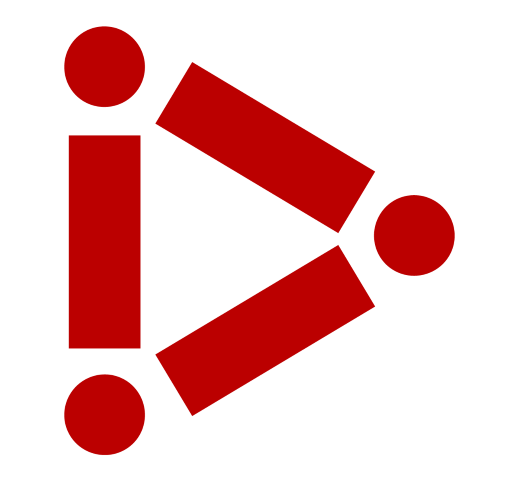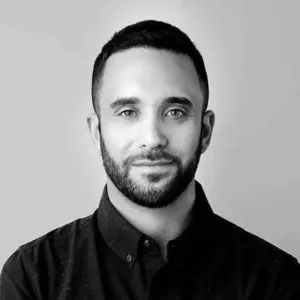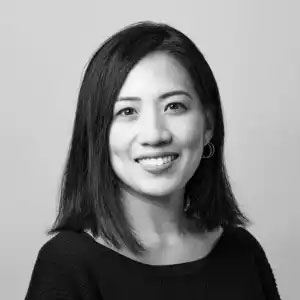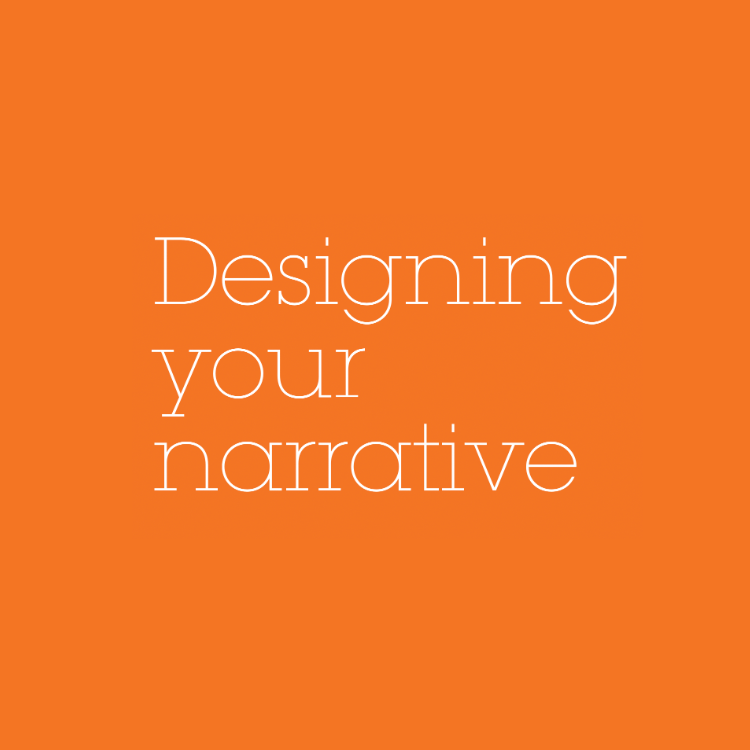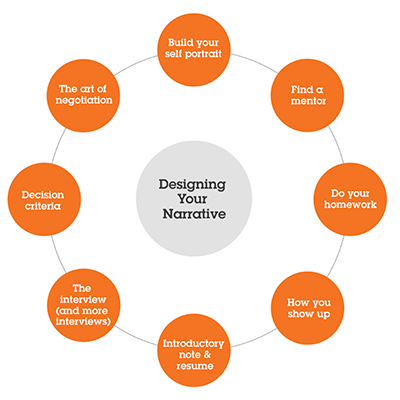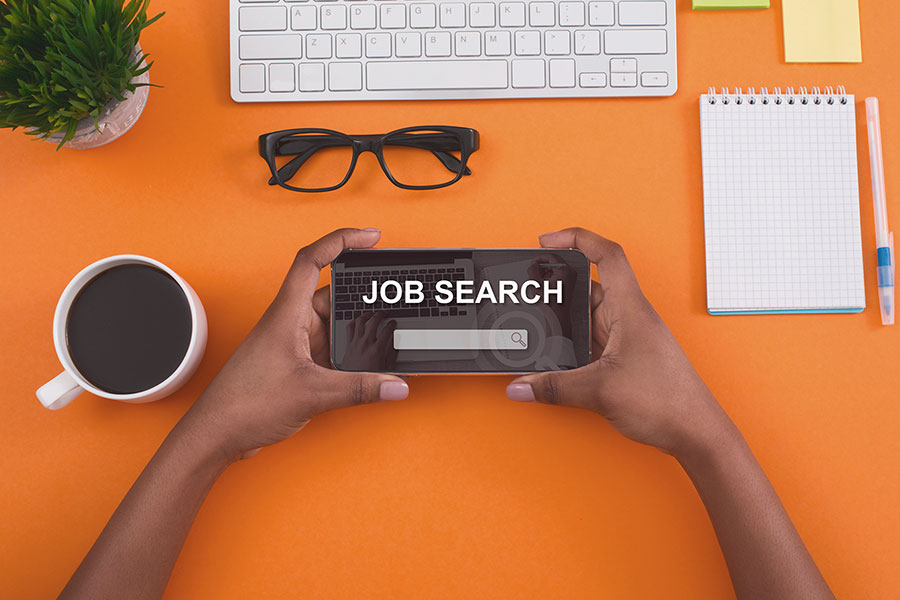
Wert&Co. – How to find a meaningful career in an unpredictable job market
By Phil Geist
Daniel Wert and Stacy La of Wert&Co. recently led a seminar session discussing how to find a meaningful career in an unpredictable job market. Wert&Co. is the Design community’s most trusted search firm, dedicated to building global businesses with creative leadership. They have worked with some of the world's most influential companies in a wide range of industries for almost thirty years.
During their session with MIIPS students from the Integrated Innovation Institute, Daniel and Stacy shared a number of helpful insights. They discussed the concept that "there are many ways to be a leader" and how new job titles and career paths are emerging as new industries mature. They also emphasized to students that a job title or the number of people you manage doesn't always equate to success. Instead, those seeking new opportunities should be intentional about targeting roles that will be fulfilling and fit well with their strengths and opportunities for growth.
Wert&Co. shared that in order to be strategic about landing an awesome opportunity, you should “design your narrative” and think of your job search as a thoughtful journey and your “application” as a product — one that requires strategy, design, and marketing.

However, that journey is rarely easy and never linear. Finding an awesome opportunity is more like navigating through a maze that includes: many twists and turns, a moment when you realize "this is harder than I thought,” self-doubt, quiet times for reflection, surges of confidence, and pivots to new possibilites. In reality, the journey often looks something like this...
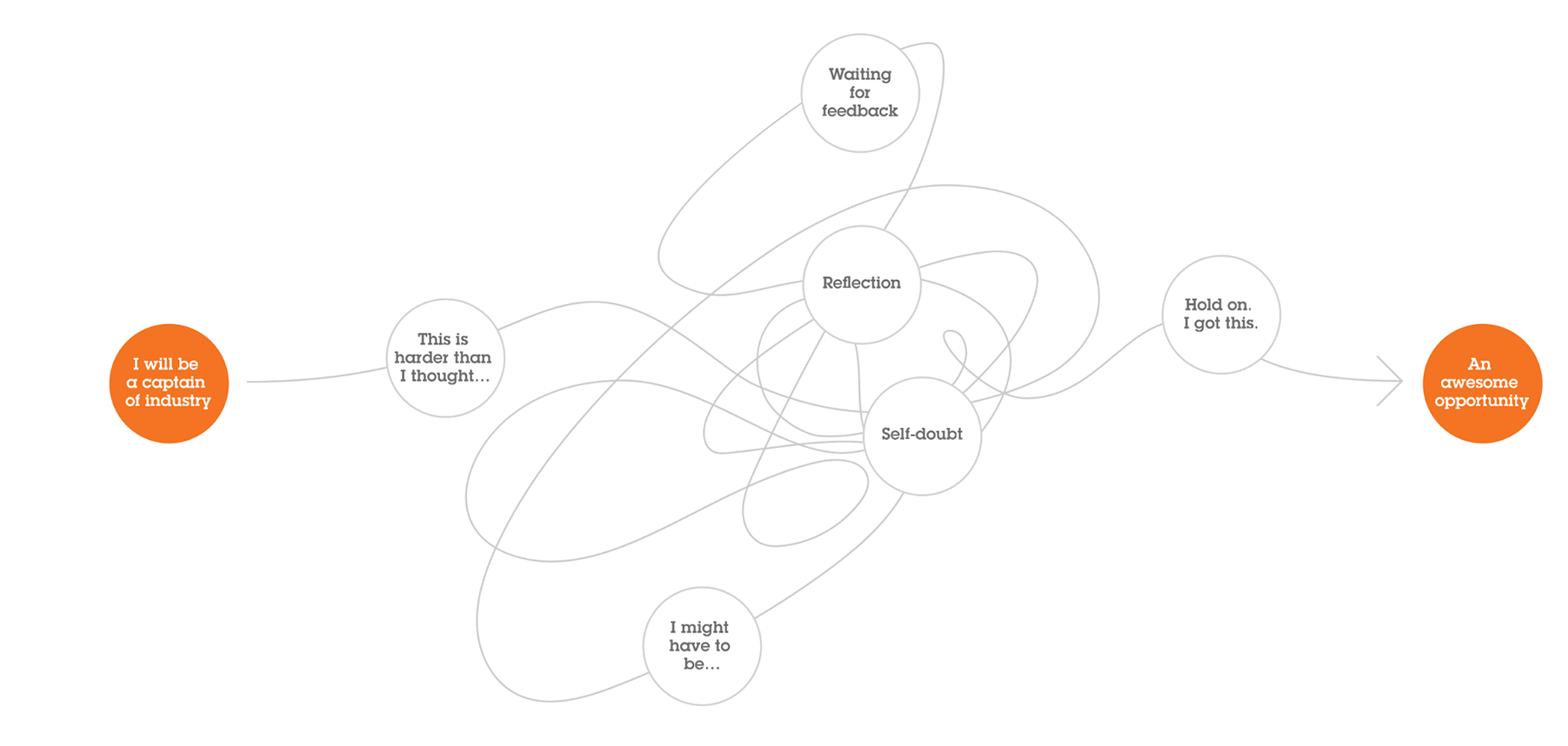
Here are some questions that iii students asked Daniel Wert and Stacy La of Wert&Co.:
iii:
Based on your experience, what do you think is the biggest factor that allows students not only to find a job but a good job they really want?
Wert&Co.:
Think about your own intrinsic motivation and curiosity. It's important to know yourself and to be intentional about presenting your professional narrative in a confident way to an interviewer. When you’re looking for a new job, you should assess the company that's interviewing you as well: “Do you like the team? Do you like the culture?” Interviewing is a two-way street.
iii:
Do you have any advice for candiates who are new to the interviewing process?
Wert&Co.:
Stay humble when talking about your career highlights. Be aware of points in the conversation where you should shift your approach to saying “we” instead of “I” when discussing projects you worked on with other team members. Great leaders say "We" when things go right and "I" when things go wrong.
iii:
During the interview process, what criteria do you usually use to select the most suitable candidate among a pool of several candidates?
Wert&Co.:
IIt’s important to be curious. You should thoughtfully prepare questions for the interview that are specifically about the company and the role you're interviewing for. During the interview process, you should make a concerted effort to learn about the company by reading as much public content as possible. Understand the people on the other side of the table interviewing you as well—they all have LinkedIn and social media profiles—try to learn about their career paths, histories, and interests.
iii:
Do you have any tips for students preparing for an upcoming interview?
Wert&Co.:
It's important to practice good interview etiquette. Be prepared. If the interview is in person, dress for success and give yourself enough time to travel to the company's office. If it’s a virtual interview, test your audio and video presentation beforehand to avoid technical issues the day of, and do your best not to take the call from a public place.
Once the interview is over, make sure to send thank you notes to each person who interviews you. Additionally, be mindful of how many companies you are interviewing with and try to stagger those conversations so you can bring your best self to each interview. Don’t stretch yourself too thin.
iii:
During the interview process, what do you value most in an interviewee for a UX designer position?
Wert&Co.: :
Specifically for UX — craft and taste are important. There’s value in navigating ambiguity and communicating complex subject matter to others in a way that they can clearly understand. Establishing a methodical process and being able to collaborate with people who have different points of view than yourself is essential. You’ll need to work with employees in different company departments to develop a holistic appreciation for the business and Design’s role. Whether that’s working with multiple teams or individuals at the senior level — collaborating throughout the company will help you understand why your creative solution will be impactful.
iii:
How do people with a non-traditional design background best make their case based on the cross disciplinary work they have done?
Wert&Co.:
Start with thinking about the general skills you can bring to the table. Design is a broad multi-disciplinary category, but the first principles of design are transferrable. Designers know how to connect concepts for their users and can create consistency and cohesion in the midst of chaos. Whether through storytelling, research, or understanding people, try to think about the foundation of what you've already learned and connect the dots with the responsibilities for the role. [Stacy] often looked for people with different backgrounds when hiring because those types of candidates came with new perspectives and brought an overall sense of diversity to the team.
iii:
What kind of resumes and portfolios can attract a recruiter's attention most? Why?
Wert&Co.:
We advise against using password-protected portfolios. The more friction you put between yourself and your audience, the less engaged your audience will be. Hiring managers and recruiters often move too quickly, and many will skip your application if the content isn't readily available — if you don’t need a password for legal reasons, don’t use one.
iii:
When you’re considering people for product design and UX design roles, how do you compare people who have a design background and people who are switching?
Wert&Co.:
It depends on the industry. For example, in the healthcare industry, it may be beneficial to have someone with experience in understanding complex systems. On the other hand, industries that deal with consumers and brands may require individuals with strong graphic design and art skills.
iii:
Do you have examples of portfolios? Can you share what types of information are included in a portfolio?
Wert&Co.:
Start your portfolio with a brief personal introduction and share insights about yourself and who you are outside of work. For a design portfolio, share your overall philosophy around design and then get into your individual case studies. The case studies should show what you are most proud of and why. Regarding the structure of a portfolio, some essential component pieces include a table of contents, a career timeline, case study slides showcasing your creative work, a description of your process, and a simple thank you slide. People often miss the closing slide, and it's integral to your whole portfolio presentation because the closing slide ties everything together at the end.
Here are some Portfolio screenshots of Case Study Examples:

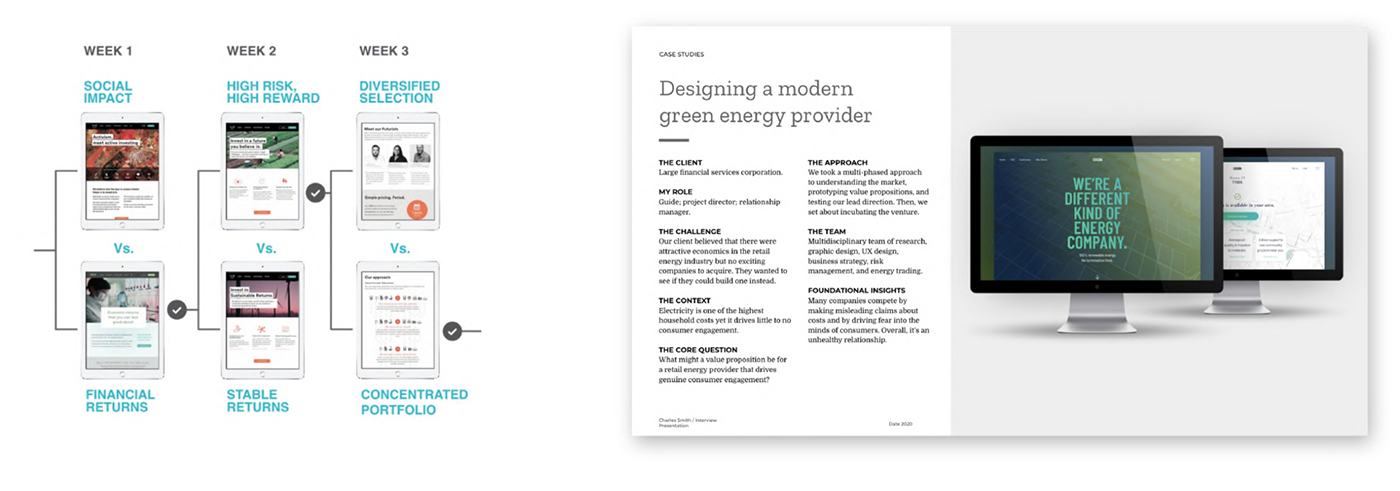
There are other things you can do as a job seeker to equip yourself and prepare for the process, which includes: building your professional self-portrait, practicing for interviews, and doing your homework on the companies you’re meeting with.
If a portfolio presentation is required during an interview, prepare a bespoke presentation rather than using a website. The audience for the portfolio presentation will depend on the company, and you should adjust your content and viewpoint accordingly.
They also discussed what recruiters look for in resumes and portfolios and provided tips for people with non-traditional design backgrounds.
Here is a list of resume style tips to include in terms of content structure when crafting your resume:
- Contact Information [Email, LinkedIn, Cell]
- Summary of Experience
- Accomplishments and project highlights
- Employment [include most relevant]
- Education [degrees and dates]
- Thought leadership [writing, blogs, etc. ]
- Awards
- Philanthropy, hobbies, and interests
When crafting your resume, it is vital to use action verbs. Try to keep your resume to one page if at all possible. They advise not to add photos or corporate logos. They also recommend utilizing white space for legibility – so your resume doesn't appear cluttered. Instead of throwing all your ideas into one big text block, prioritize and organize highlights for each role in a bulleted list.
Here is a list of Resume Resource links and Suggested Readings that Wert&Co. shared with the class:
Suggested Reading |
|
| Design as Art by Bruno Munari |
A great intro into the power of creativity. |
| Creativity Inc. by Amy Wallace & Edwin Catmull |
We've always admired Pixar's consistency but were awed by the journey they took to get where they are today. |
| Creative Confidence by Tom Kelley and Dave Kelley |
An inspiring read and call to action for anyone that has felt dips in their creative confidence. |
| Whatever You Think, Think the Opposite by Paul Arden |
Arden has a knack for inspiring his readers almost instantly. |
| The Universal Traveler by Don Koberg & Jim Bagnall |
Maybe the first book on design thinking? A beautiful Wab-sabi book on the creative process from 1974. |
| Drawdown by Paul Hawken |
An incredible collection of solutions to climate change, because it will affect everything we do very soon to life. |
